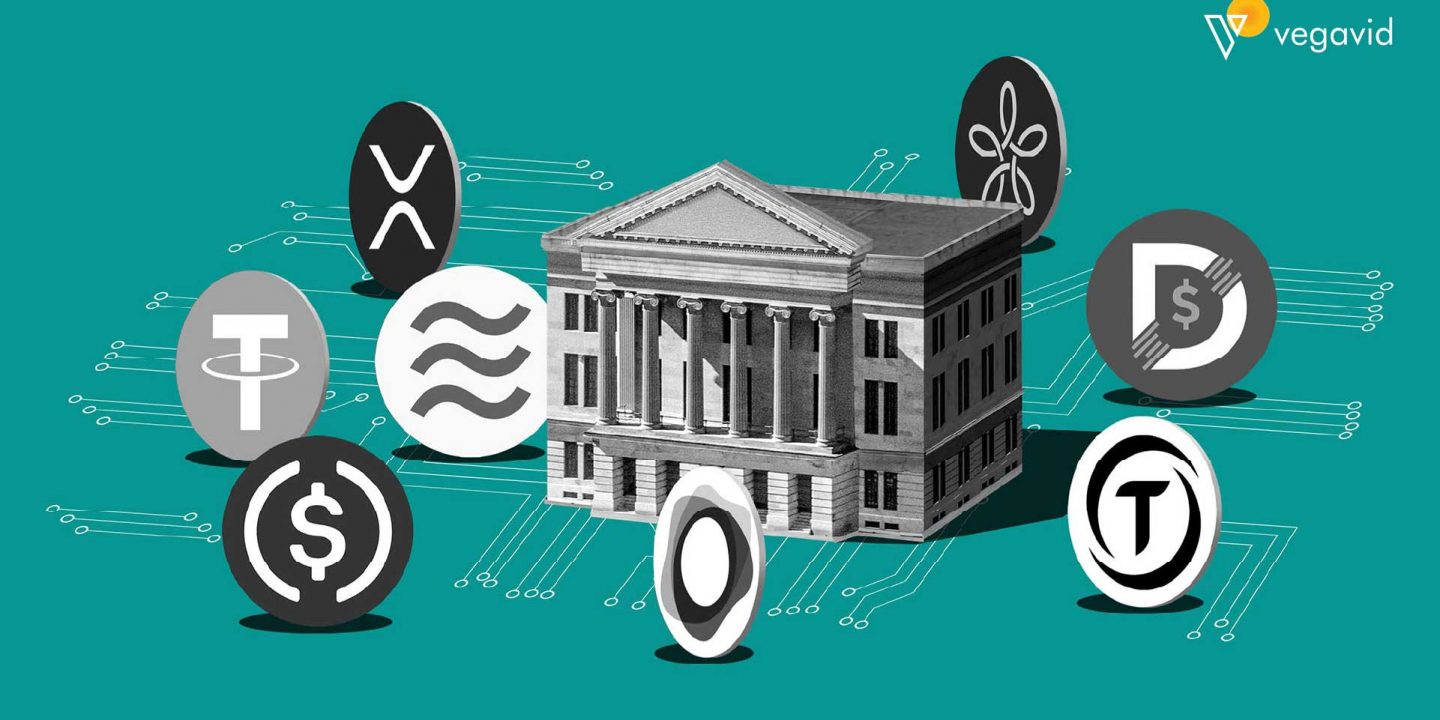
Aiming to make international payments quick, inexpensive, and accessible, Stellar is an open-source blockchain network. Beyond allowing bitcoin transfers, Stellar’s platform enables companies to create digital assets, run smart contracts, and streamline transactions. The Stellar network has capabilities that can assist organizations in finding new consumers, cutting expenses, and innovating. However, organizations must first comprehend what Stellar is and how it functions at its core in order to fully leverage its potential. If applied correctly through the appropriate applications, stellar blockchain technology can revolutionize how organizations conduct value exchange and open up new development prospects. This blog will discuss how Stellar functions and how companies may make use of its potential.
What is Stellar blockchain?
Stellar is an open-source blockchain network for payments. Similar to cryptocurrencies like Bitcoin, Stellar aims to make international payments fast, inexpensive, and reliable. Unlike Bitcoin, Stellar is designed specifically to facilitate the transfer of money across borders.
Stellar uses a digital asset called a Lumens which represents a value on the network. Lumens act like currency to facilitate the transfer of other assets like dollars, yen, bitcoin, or other digital currencies. Other assets can also be issued and traded on the Stellar network. Stellar’s goal is to connect banks, payment systems, and people, allowing money to move directly and quickly between them.
Stellar aims to offer a simple platform for payments and exchanging money between institutions and individuals. Transactions on the Stellar network are completed in just a few seconds, as opposed to minutes or hours for Bitcoin. Transaction costs on Stellar are very low, sometimes costing just a fraction of a cent. As an open blockchain, anyone can build applications atop the Stellar network.
Founded in 2014, the nonprofit Stellar Development Foundation oversees the network’s development. IBM is one of the major partners using Stellar technology. They are working on creating stablecoins linked to fiat currencies for payments between financial institutions. If successful, Stellar’s technology could one day transform cross-border payments.
Features of Stellar blockchain
Stellar is an open-source blockchain network that offers several features that can benefit businesses. The key features of Stellar and its business benefits are:
Fast and cheap transactions – Stellar transactions settle in just a few seconds, compared to minutes for Bitcoin and hours for bank transfers. The transaction fees are also very low, costing only a fraction of a cent. This makes Stellar ideal for micropayments and frequent transactions between businesses.
Asset issuance – Stellar allows anyone to issue digital assets on the network, representing things like currencies, rewards points, or digital shares. Businesses can issue digital representations of their goods and services on Stellar to facilitate trading and payments. This greatly simplifies and streamlines business operations.
Interoperability – Stellar’s design makes it easy to connect different financial institutions and payment systems. Businesses can receive payments from a wide range of sources on a single network. Banks and fintech companies can build applications that work seamlessly with the Stellar network.
Low infrastructure costs – There are no transaction or account fees levied by Stellar itself. Businesses only pay minimal network fees for each transaction they make. This keeps operational costs low and predictable.
Payment infrastructure – Stellar offers a ready-made platform and technology for businesses to send and receive payments internationally. Businesses do not need to build their own payment rails from scratch. They can leverage the existing network, APIs, and tools provided by Stellar.
Stability – The Stellar network has performed reliably since its launch in 2014. The non-profit foundation behind Stellar ensures the safe and stable development of the network. This gives businesses the confidence to build operations on top of Stellar.
Lumen’s asset – Stellar’s native Lumens digital asset acts as a bridge currency between assets on the network. Businesses can use Lumens to convert between different currencies or exchange value on Stellar. This gives the network even more liquidity and flexibility.
How does Stellar blockchain work?
The Stellar Consensus Protocol uses a mechanism called Federated Byzantine Agreement to finalize transactions and reach a consensus. In each round, validator nodes vote on a set of requirements to reach a consensus. The requirements are:
- Validity: A majority of nodes agree that a set of transactions are valid.
- Uniqueness: No transaction appears more than once in the set.
- Closure: The set of transactions builds upon previously agreed upon transactions.
- Agreement: A majority of nodes agree to the same set of transactions.
If a proposal meets these requirements, it becomes the ‘consensus set’ for that round and new Lumens tokens are issued to the network proportionally to stakeholders’ deposits. This rewards the nodes for securing the network.
The quorum slices mechanism and supermajority voting (80% of validators needed to finalize a block) help ensure the network can withstand up to one-third of validator nodes failing or misbehaving.
Overall, the Stellar Consensus Protocol relies on a weighted voting system and automatic rewards to align the economic incentives of validators and minimize the risks of centralization. It also uses cryptographic techniques to ensure security and transparency of transactions on the network.
How does the payment system in Stellar operate?
The Stellar network operates a decentralized payment system that allows for fast and cheap transfer of digital assets between users. At the core of this system are two key concepts: Lumens and anchors.
Lumens (XLM) is the native currency or asset on the Stellar network. It acts as a medium of exchange to facilitate payments between different assets on the network. Users can hold, send and receive Lumens like any other cryptocurrency.
However, unlike other cryptocurrencies, Lumens is also meant to represent the real-world value of other assets. This is achieved through anchors, which are entities that issue tokens on the Stellar network representing real-world assets.
Anchors can issue tokens pegged to fiat currencies like USD, EUR, and CNY. They can also issue tokens for loyalty points, air miles, commodities, or any other tradable asset. These asset-backed tokens give value and liquidity to the Stellar network.
When a user wants to make a payment on Stellar, they can do so using Lumens, the anchor-issued token for that asset, or a combination of both. The network handles the conversions in the background to facilitate the transfer of value.
For example, if a user in the US wants to send $50 to someone in China, they can do the following:
- Purchase $50 worth of US Dollar tokens (USDt) issued by an anchor
- Send USDt to the receiver
- The receiver then exchanges USDt for Chinese Yuan token (CNYt) issued by another anchor
- The receiver finally exchanges CNYt for actual Chinese Yuan (CNY) held by the anchor
The Stellar network handles the intermediate conversions by exchanging the USDt tokens for Lumens and then Lumens for CNYt tokens. It does this using an algorithm called the Stellar Decentralized Exchange.
The Stellar Decentralized Exchange matches orders and determines exchange rates between different assets on the network through a constant double auction system. Users can also place limited orders to buy or sell assets at a specific price.
Business applications of Stellar blockchain
Stellar blockchain can be used by businesses for various applications due to its features like low-cost transactions, asset issuance capabilities, and speed. Some of the main business applications of Stellar are:
Payment Processing – Stellar offers a decentralized payment rail for businesses to process international payments at a lower cost compared to traditional providers. It is faster, cheaper, and more reliable. Businesses can issue their own tokens on Stellar to represent value and facilitate payments.
Remittances – Stellar’s speed, low fees, and interoperability make it suitable for money transfer businesses and fintech companies focused on remittances. Stablecoins and tokenized assets on Stellar allow transferring value across borders more efficiently.
Loyalty and Rewards – Businesses can issue digital tokens on Stellar to represent rewards points and loyalty miles. Customers can then spend these tokens at different merchants on the network. This allows the pooling of rewards programs on a single system.
Supply Chain – Stellar enables tokens to represent real-world assets like inventory or shipped goods. This blockchain visibility throughout the supply chain can simplify processes, reduce fraud and enable automatic payments.
Banking – Financial institutions can use Stellar’s technology to build applications for instant cross-border transfers, settlements, and issuing of stablecoins representing fiat currencies. This may transform the way banks facilitate international payments.
Trading – The decentralized exchange built into Stellar makes it suitable for businesses involved in trading digital assets. Tokens issued on Stellar can represent shares, commodities, or other tradable assets.
Conclusion
In conclusion, Stellar offers promising blockchain technology for businesses through its features like fast and low-cost payments, asset issuance capabilities, decentralized exchange, and smart contracts. When leveraged through the right partnerships and applications, Stellar’s network could help businesses transform how they facilitate payments, manage supply chains, and reward customers. However, businesses must carefully evaluate if Stellar is the right solution based on their specific needs, resources, and risk appetite. With a well-thought-out strategy and use cases, Stellar blockchain has the potential to unlock new opportunities for growth and innovation within businesses.









One reply on “What is Stellar Blockchain and its Potential for Businesses”
Thank you for sharing this information. It is useful for me. And great, valuable blog. Keep sharing more insights,